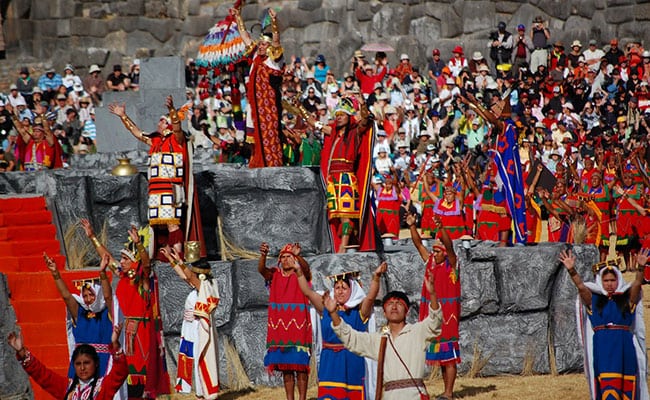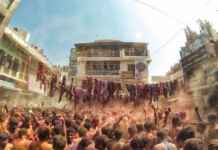The festival of sun better known as Inti Raymi is held in Sacsayhuaman, Cuzco in Peru on 24th June. As the chronicle Garcilasco de la Vega says, Sapa Inca Pachacuti had first celebrates and introduced this festival mainly to celebrate the new year of Andes. Traditionally,during the reign of the Inca Empire, this festival was the most important of four ceremonies celebrated in Cusco.It celebrates the Incan New year and the winter solstice. This is the period when the sun is the farthest from Earth. The festival is held in order to please Inti, the Sun God and pray for the arrival of summer.
It originally involved a ritualistic sacrifice of llama and the main events took place in the prime plaza of the city. This ritual was performed in the name of Goddess Pachmama,. She is considered the wife of Inti and the goddess of fertility and harvests.
Nowadays, this festival has stopped the llama sacrifice and there is no blood shed whatsoever. That doesn’t mean that this festival has lost all its traditional rituals. In an amazing way the native people have balanced their culture along with their progressive society’s views. This festival relives all but this one ritual.
The festival is presently celebrated in Sacsayhuaman. This area is a massive ruin made primarily of stone. Whether it was once a fortress or a palace still remains a mystery.
There is a procession starting from Qorikancha, the local sun temple. In this procession an actor is chosen to play Inti, the Sun God is carried in a replica of the original gold chariot. This procession is very colourful, its characterised with music, dancing and prayers. The entire route of the parade is adorned with flowers. A peculiar feature typical to this parade is the ritual of ladies who sweep alongside as the procession flows ahead. This is done in order to drive away the evil spirits.
The main people in this procession are the king Inti, ,his female counterpart Goddess Pachmama , priests and participants dressed to representvarious symbols of the festival .
This pagan procession then reaches the altar where a faux sacrifice ritual takes place. Prayers are said and speeches are given by the head priest.
The wait for the sun to set or the orb of itni to drop below horizon begins. After the sunset, the procession heads back to the temple after lighting a bonfire at the altar.
Despite the rigidness in the ritual’s rules and traditions, the natives don’t forget their guests. If you are visiting this festival and have booked on time be prepared for a royal reception. The natives take extra care to make sure their tourists don’t suffer. Even comfortable chairs will be put out for you.
However, if you want to be a part of the spirit of the festival as it is , you are free to stand with the locals. Even booking is not needed then.
Occasional Peru nationals complain that the procession is too grandeur and staged but most enjoy it immensely. This festival brings a feeling of togetherness among people. The band marches, dances, songs, speeches and prayers bring all attendees in a new dimension.
This festival was brought to a temporary halt by the Spanish conquerors during the 1500’s as it’s pagan nature contradicted the Catholic faith.
This form of the festival along with the faux sacrifice has taken place from 1944 and has attracted thousands of tourists on an annual basis. It is indeed a new ,splendid experience for all.














